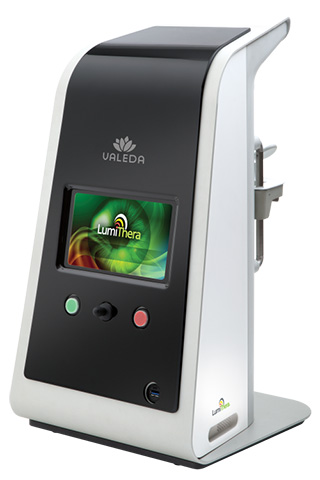

Dry Age-Related Macular Degeneration (Dry AMD) is one of the leading causes of vision loss in people over 65. Until recently, there were limited treatment options available. Now, a groundbreaking innovation known as the Valeda Light Delivery System, also referred to as photobiomodulation therapy, offers new hope for patients with this progressive condition.
Dry AMD is a chronic, age-related eye disease that affects the macula—the part of the retina responsible for sharp, central vision. It occurs due to the gradual breakdown of light-sensitive cells in the macula, often accompanied by the accumulation of drusen (yellow deposits of protein and lipids). Over time, this can lead to vision distortion, loss of central vision, and difficulty with daily activities like reading or recognizing faces.
Dry AMD accounts for approximately 85–90% of all macular degeneration cases. While the progression can be slow, it remains a leading cause of permanent vision impairment.
The Valeda Light Delivery System is the first and only FDA-authorized treatment designed specifically to improve visual acuity in patients with Dry AMD. This innovative therapy harnesses the science of photobiomodulation (PBM)—a non-invasive, light-based technology that uses specific wavelengths of light to stimulate the body's cellular energy production.
The treatment uses a combination of blue, red, and near-infrared light to target retinal cells. This light stimulates mitochondrial activity within the cells, encouraging cellular repair and reducing oxidative stress. Healthy retinal cells are critical for maintaining good vision, and Valeda therapy aims to preserve and even enhance this functionality.
Photobiomodulation works by directing precise wavelengths of low-level light into the retina. These wavelengths are absorbed by cellular mitochondria, which are responsible for producing energy within cells. By stimulating mitochondrial activity, PBM enhances cell function, promotes healing, and reduces inflammation.
With Valeda, light in three key wavelengths—590 nm (yellow), 660 nm (red), and 850 nm (near-infrared)—is delivered in a safe, pain-free session lasting under 5 minutes per eye. The light penetrates into the retinal layers to promote:
Enhanced cellular metabolism
Increased ATP production
Reduction in inflammation
Improved blood flow
Slower degeneration of photoreceptors
Patients undergoing Valeda therapy can expect a comfortable and non-invasive experience. Here’s how it works:
Before Treatment: No special preparation is needed. Patients simply remove glasses or contact lenses. There are no drugs, drops, or injections involved.
During Treatment: Patients are seated in front of the device and guided through a short light exposure session lasting less than 5 minutes per eye.
After Treatment: Some patients may experience a temporary afterimage known as photostress, which usually resolves within 15–30 seconds. Most people can resume normal activities immediately.
A typical course involves 9 treatments over 3 to 5 weeks, with the process repeated every 4 months. Your eye doctor will tailor the treatment schedule based on your condition and vision goals.
Valeda therapy has been extensively studied in clinical trials and has shown promising results. After two years of treatment, patients experienced a mean improvement of one line in visual acuity on the ETDRS eye chart, compared to those who did not receive treatment.
Safety Profile: In all clinical trials, no treatment-related adverse effects were reported. However, Valeda is not recommended for individuals with photosensitivity to specific wavelengths or those using light-activated medications.
Dry AMD is a progressive disease. Starting treatment early—before vision loss becomes severe—may help slow the degeneration and support healthy retinal function. While there is no cure for AMD, proactive treatment with Valeda can help maintain and even improve vision.
To learn more about this treatment or to schedule a consultation, please call our office or you can email larsen@
Photobiomodulation is a therapy that uses specific wavelengths of light to stimulate cellular energy production, reduce inflammation, and enhance healing in targeted tissues.
No. The treatment is completely non-invasive and painless. Most sessions are quick, lasting under 5 minutes per eye.
Patients typically receive 9 sessions over 3–5 weeks per treatment series. A new series may be scheduled every 4 months, depending on your eye doctor’s recommendation.
The most common effect is temporary photostress, which resolves within 30 seconds. No adverse side effects were reported in clinical trials.
Yes. Patients can immediately resume daily activities, including driving and reading.
Patients with known photosensitivity to red, yellow, or near-infrared light, those with epilepsy, or those using certain photosensitizing medications should consult their physician before undergoing treatment.

